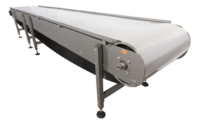Area-wide Bacillus thuringiensis (Bt) adoption suppresses crop pests, with declines expanding to non-Bt crop fields. A recent article describes positive impacts to growers and producers of Bt crops. The authors descirbe the significance of their study below.
What key achievement does this paper describe?
Transgenic crops containing the bacterium Bacillus thuringiensis (Bt) genes reduce pests and insecticide usage (resulting in benefits for food safety), promote biocontrol services, and economically benefit growers. Area-wide Bt adoption suppresses pests regionally, with declines expanding beyond the planted Bt crops into other non-Bt crop fields. However, the “offsite” benefits to growers of other crops from such regional suppression remain uncertain. With data spanning 1976–2016, we demonstrate that vegetable growers benefit via decreased crop damage and insecticide applications in relation to pest suppression in the mid-Atlantic United States. We provide evidence for the regional suppression of Ostrinia nubilalis (Hübner), the European corn borer, and Helicoverpa zea (Boddie), the corn earworm, populations in association with widespread Bt maize adoption (1996–2016) and decreased economic levels for injury in vegetable crops (bell peppers, green beans, and sweet corn) compared to the pre-Bt period (1976–1995). Moth populations of both species significantly declined in association with widespread Bt maize (field corn) adoption, even as increased temperatures buffered the population reduction. We show marked decreases in the number of recommended insecticidal applications, insecticides applied, and O. nubilalis damage in vegetable crops in association with widespread Bt maize adoption. Fewer insecticidal residues would also benefit food safety.
How does this result improve upon/advance what has been done before?
An important finding of our study is that the observed regional pest suppression in association with widespread Bt adoption benefits mid-Atlantic vegetable growers through reduced crop damage and insecticide usage. These offsite benefits to other crops in the agricultural landscape have not been documented previously, so these results expand on the reported ecological effects of regional Bt adoption, including pest suppression in non-Bt crops promotion of biocontrol services. Our results also underscore the need to account for offsite economic benefits of pest suppression, which boosts food safety, in addition to the direct economic benefits of Bt crops. The regional pest suppression from area-wide Bt adoption is well documented in previous studies, with target pest declines expanding beyond the planted Bt crops into other non-Bt crop fields. The regional adoption of Bt corn and cotton suppresses pest populations in non-Bt corn and cotton fields in the region. For instance, previous studies found that non-Bt field corn growers in the Midwestern U.S. benefitted economically from regional suppression of European corn borer through area-wide Bt field corn adoption. Similarly, adoption of Bt cotton in China suppressed pink bollworm, and cotton bollworm. In addition, Bt cotton adoption also suppressed cotton bollworm larval density in other host crops. However, the benefits to vegetable growers in the form of reduced insecticide usage and damages has not been documented previously particularly in terms of long-term, regional pest dynamics in relation to Bt adoption.
Why would the public be interested in this result?
Overall, our study provides a comprehensive, long-term, and regional-scale documentation of the benefits of transgenic crops. We show that widespread Bt field corn adoption is strongly associated with marked decreases in the number of recommended insecticidal applications, insecticides applied, and damage to vegetable crops in the U.S., all to the benefit of food safety. These positive impacts to growers, including organic producers, in the agricultural landscape expands on known ecological effects of Bt adoption. Both European corn borer and corn earworm have broad feeding and migratory behaviors as economically important pests on many agricultural commodities. European corn borer is a major pest of green beans and peppers, and both insects are major pests of sweet corn. With New Jersey as a key pepper producing state in the U.S., these vegetable crops are economically important components of the 3,816 farms in New Jersey, Maryland, Delaware, and Virginia. In 2016, the three vegetable crops generated $75 million in farm cash receipts on these farms. With about one-half of the sweet corn, peppers, and green beans acreage contracted for processing, the six processing companies operating in the mid-Atlantic region depend on these vegetable crops. Vegetable growers in other parts of the United States with reduced European corn borer pressure through high Bt corn acreage, are also potential benefactors. Particularly, producers of these vegetables for processing in the north-central portion of the United States (Michigan, Wisconsin, Minnesota, and Ohio) may benefit economically.
How does this result change our understanding of nature, technology, and/or the scientific process?
Our results indicate that both traditional and organic vegetable growers, and the processing industry benefit from widespread Bt field corn adoption. These results expand on the known ecological effects of Bt crop adoption which includes reduced insecticide usage (increased food safety), promotion of biological control services in addition to economic benefits.
How will this result affect future research directions, for yourself and others?
Quantification of the economic benefits from these offsite benefits of Bt corn adoption is an important next step for research. While not quantified in this article, such economic benefits may include reduced control costs and fewer losses due to contamination at harvest. Particularly for vegetable processing, with low threshold of pest infestation tolerated (peppers, green beans), the damage reduction implies less contamination and rejection, and greater economic value. Organic growers may also benefit from reduced damages due to the suppression of European corn borer and corn earworm populations. While area wide Bt adoption benefits vegetable growers, these non-Bt vegetable crops in the agricultural landscape are alternate hosts of European corn borer and corn earworm that act as unstructured refuges for Bt resistance management. Quantifying the role of such crops as non-Bt hosts, for resistance management, is another avenue for research. Finally, the sustainability of Bt corn in the mid-Atlantic region and elsewhere, and the associated economic and environmental benefits, is threatened due to the resistance development in corn earworm to multiple Cry proteins and rise of insect resistance in general. Developing integrated pest management strategies (biological control, crop rotation, etc.) that incorporate insect resistance management plans could help sustain the Bt technology.
Galen P. Dively, Ph.D., and P. Dilip Venugopal, Ph.D., Department of Entomology, University of Maryland; Dick Bean, Office of Plant Industries and Pest Management, Maryland Department of Agriculture; Joanne Whalen, Department of Entomology and Wildlife Ecology, University of Delaware; Kristian Holmstrom, New Jersey Agricultural Experiment Station, Rutgers University; Thomas P. Kuhar, Ph.D., Department of Entomology, Virginia Polytechnic Institute and State University; Hélène B. Doughty, Eastern Shore Agricultural Research and Extension Center, Virginia Polytechnic Institute and State University; Terry Patton, Department of Entomology, University of Maryland; William Cissel, Department of Entomology and Wildlife Ecology, University of Delaware; and William D. Hutchison, Ph.D., Department of Entomology, University of Minnesota.




